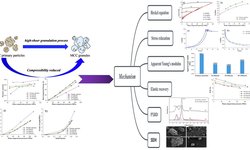Scientific papers
The combination of microcrystalline cellulose (MCC), exhibiting plastic behavior, and calcium phosphate anhydrous (CaHPO4), known for its brittle characteristics during compaction, is widely favored in the pharmaceutical sector to achieve desired structural and mechanical attributes in tablet formulations. To explore this further, various blends of MCC and CaHPO4 were evaluated in volume proportions ranging from 100-0 to 0-100, maintaining a constant weight-by-weight concentration of sodium stearyl fumarate lubricant. These blends were subjected to compaction using a sophisticated benchtop compaction simulator (STYL’One Nano) across pressure levels of 100, 150, 250, 350, 450, and 500 MPa. The resulting tablet formulations were assessed through a comprehensive analysis covering tabletability profile, ejection force profile, relationship between proportion and tensile strength, proportion and porosity, pressure and displacement, and elastic recovery profiles. Moreover, in-/out-of-die Heckel plots and yield pressures were also examined. Notably, the 25-75 formulation exhibited a distinctive two-stage out-of-die Heckel plot and was further scrutinized using X-ray micro-computed tomography (µCT). Through post-processing of the µCT data, the extent of fragmentation of brittle CaHPO4 particles under escalating compression pressure was quantified using the surface area to volume (S/V) ratio. Specifically for the 25-75 formulation, the initial stage (up to 150 MPa) and subsequent stage (above 150 MPa) of the out-of-die Heckel plot were associated with predominant deformation of MCC and CaHPO4, respectively.
Comments
No comments posted yet.
Add a comment














